Hydraulic Structure & Civil Training Package, ADVANCED Users,10 Products
$481.00 Student Discount
This product includes Geometry & Mesh file and a comprehensive Training Movie.
There are some free products to check our service quality.
To order your ANSYS Fluent project (CFD simulation and training), contact our experts via [email protected], online support, or WhatsApp.
Click on Add To Cart and obtain the Geometry file, Mesh file, and a Comprehensive ANSYS Fluent Training Video.To Order Your Project or benefit from a CFD consultation, contact our experts via email ([email protected]), online support tab, or WhatsApp at +44 7443 197273.
There are some Free Products to check our service quality.
If you want the training video in another language instead of English, ask it via [email protected] after you buy the product.
Description
Hydraulic Structure & Civil ANSYS Fluent Training Package, 10 Practical Exercises for ADVANCED Users
This Training Package includes 10 practical exercises that are numerically simulated by ANSYS Fluent software for ADVANCED users in the field of Hydraulic Structures and Civil engineering.
Water Turbine (Hydraulic Structure)
We start this training package with study number 1 which investigates the water flow on the horizontal axis water turbine (HAWT) blades so that the purpose of the problem is to investigate the distribution of velocity and pressure on the wall of the blade. There are two areas around the blades, including a cylindrical area as the rotational zone just around the blades, and a large area around the cylinder as the stationary zone. The flow of water in the large outer space behaves like a normal flow, while in the cylindrical region around the blades, the rotational flow is caused by the rotational motion of the blades.
Problem number 4 simulates the water flow around a Darrieus vertical-axis water turbine submerged in water using the dynamic mesh method. The water turbine is from the category of vertical axis turbines and is of the Darrieus type; So that the axis of the turbine is perpendicular to the direction of water flow. For this simulation, a vertical axis turbine with three blades is designed within a relatively large computational domain in which the computational area has only water flow.
The water wheel is an example of a Pelton turbine that is simulated in practical exercise number 9. In order to solve the fluid flow equations, the averaged form of the Navier-Stokes equation is used. The two-phase model also uses is the VOF model. The turbine’s diameter is 0.7 m and the boundary of the free surface is actually 0.2 m below the center of the water wheel. In this CFD simulation, the rotational speed of the turbine is 60 rpm. For the present issue, we should use the MESH MOTION.
Open Channel Flow
In analysis number 2, the two-phase flow of water and air inside an open channel is investigated. The standard k-omega model is used for solving turbulent flow equations. Also, a multi-phase VOF model with the use of an open channel setting is activated to simulate two phases of water and air inside the channel. Problem number 7 simulates two-phase flow (water and air) inside an open channel with a 180-degree arc. To simulate the mentioned two-phase flow, the multiphase VOF model (Volume of Fluid) has been used; Because this two-phase flow is considered free surface flow.
Spillway (Hydraulic Structure)
In practical exercise number 3, the flow inside a wide-edge spillway with a lateral slope is investigated. It should be pointed out that there is an elevation difference between the main and sub-channel for reasons like storing a portion of flowing water. The RNG k-epsilon model is used for solving turbulent flow equations.
Paper Numerical Validation
Problem number 5 simulates the separation of fluid flow passing through a step and the effect of suction and blower control jets on controlling the separation of fluid. This simulation is based on the information of a reference article “A force reduced-order approach for optimal control of turbulent flow over backward-facing step using POD analysis and perturbation method“, and its results are compared and validated with the results in the article. In this simulation, the fluid flow enters the channel horizontally at a speed equivalent to 1 ms-1 and then passes through a step to a height of 1 m within 30 m inside the channel, leading to separation.
Sedimentation (Hydraulic Structure)
Problem number 6 simulates sand particle sedimentation in a water flow channel. The sedimentation phenomenon is one of the destructive phenomena in the quality of performance of any equipment. Sedimentation can occur when the base fluid contains excess soluble particles.
Water Pollution
In project number 8, a Numerical simulation of pollution in a stagnant river has been done. The VOF model is used to simulate the phases. Pollutant enters the river from a nonuniform profile somewhere in the middle of the river, and it diffuses into the water. Due to its density which is lower than water density, it floats on the free surface of the river. Finally, in practical exercise number 10, a numerical simulation of pollution of the meandering river has been done. The VOF model has been used to simulate and solve the two-phase flow field equations. Pollutant enters the river from two circular inlet profiles somewhere at the beginning of the river, and it diffuses into the water. Due to its density which is lower than water density, pollutants cause the river’s surface to be polluted, and because of the water flow, pollution moves along the river.
You can obtain Geometry & Mesh file, and a comprehensive Training Movie that presents how to solve the problem and extract all desired results.
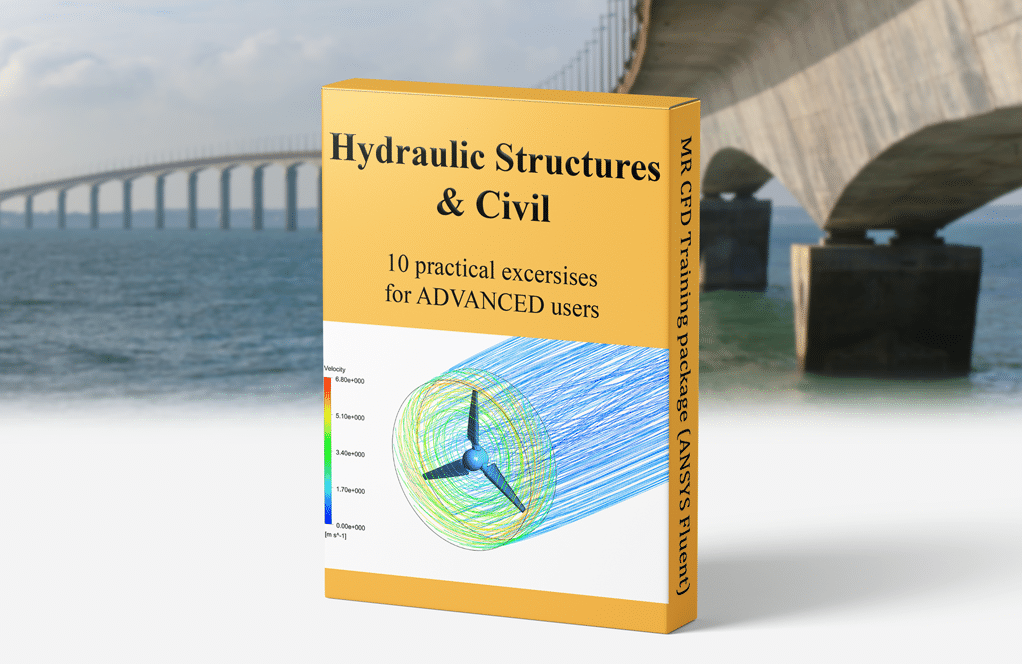
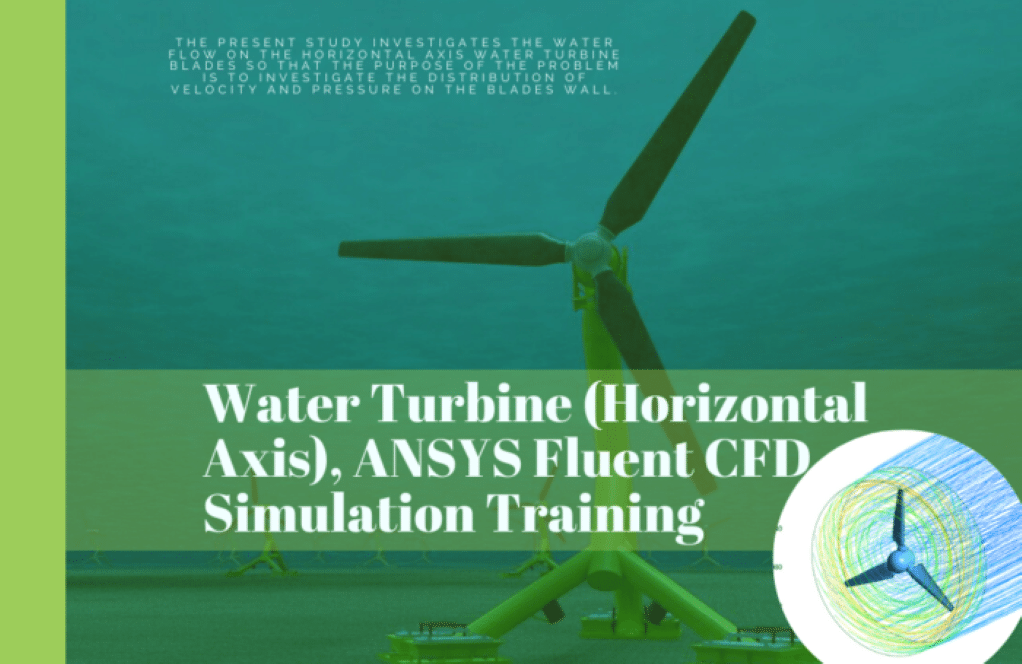
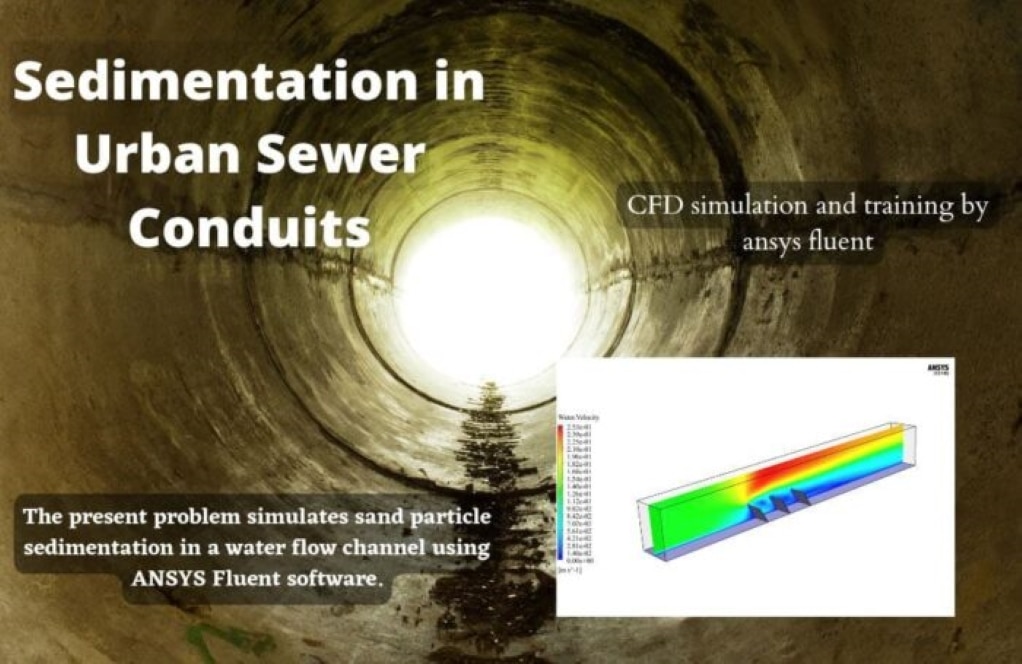
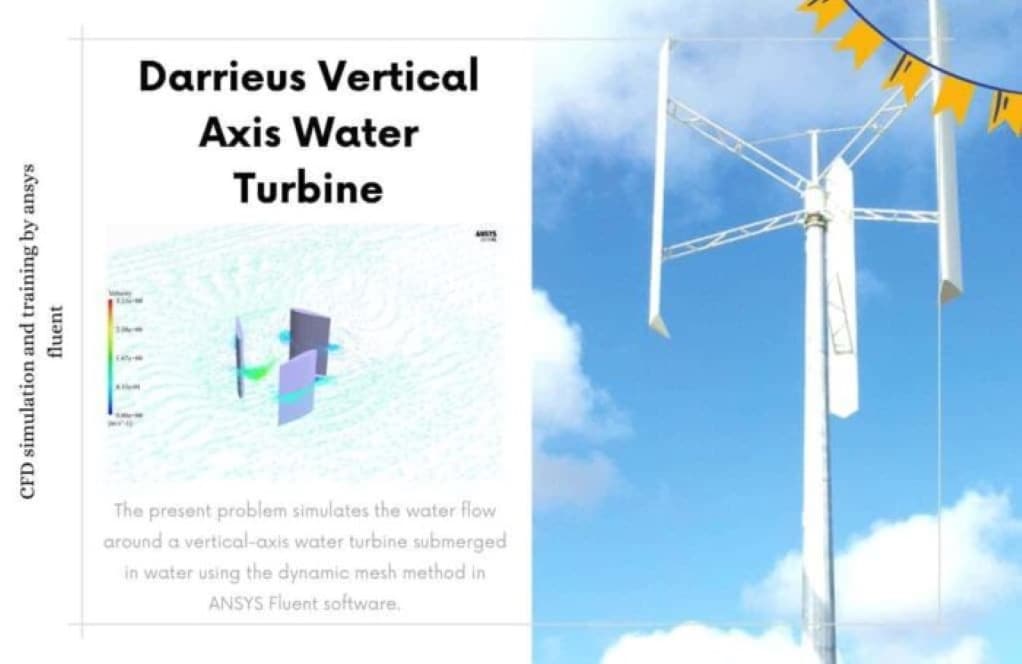
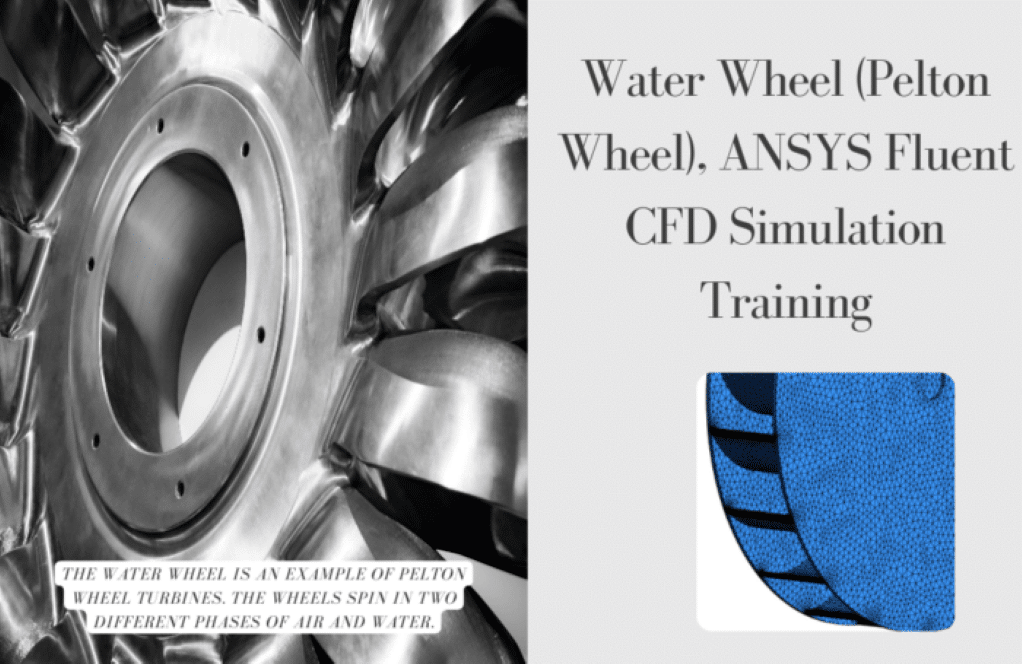
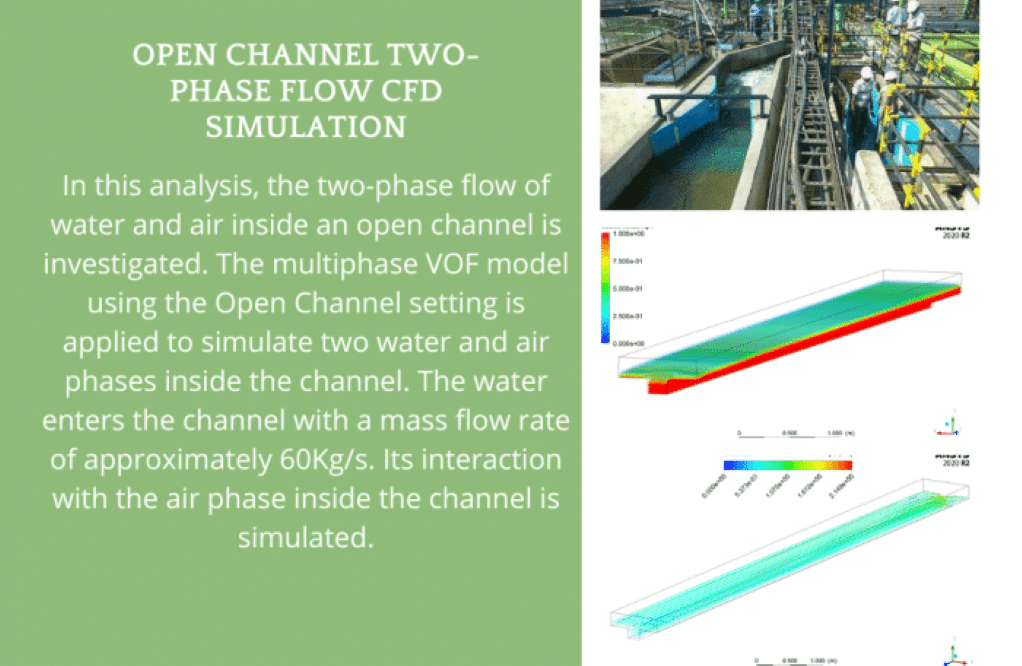

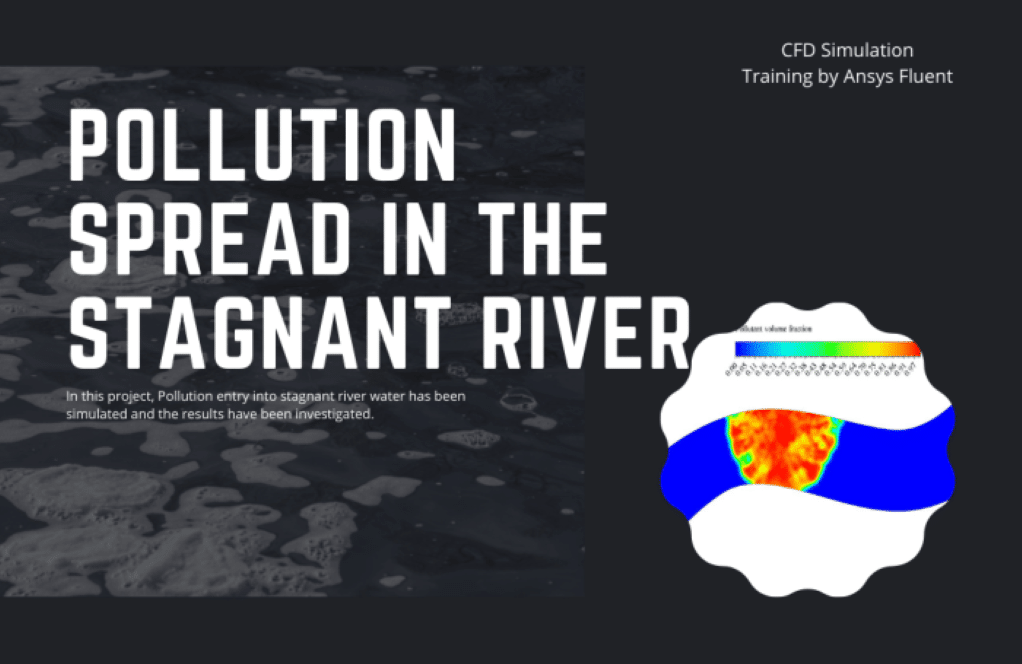
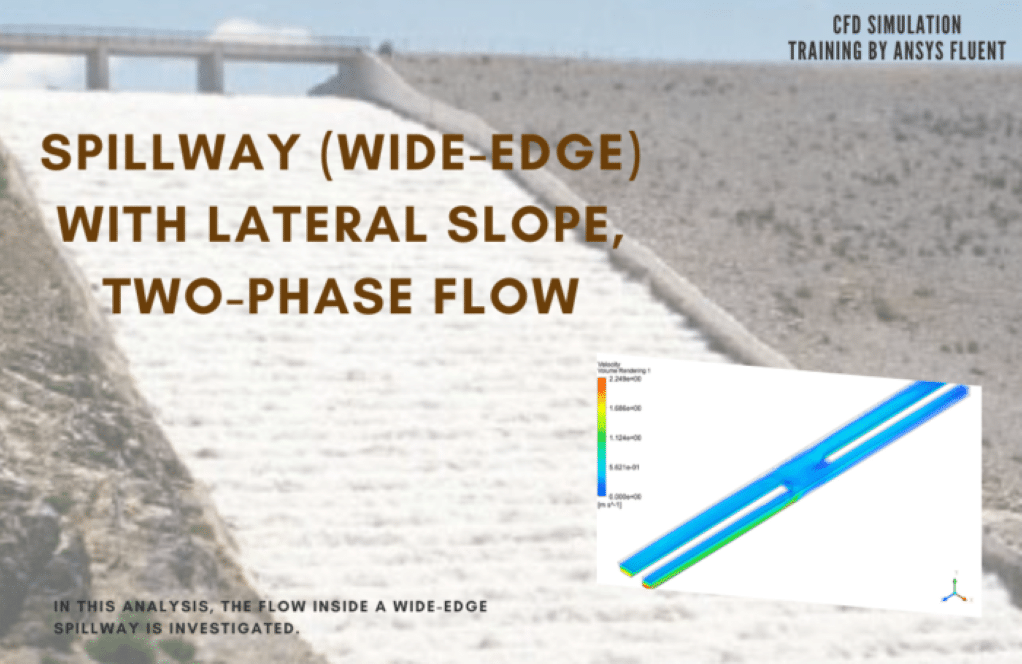
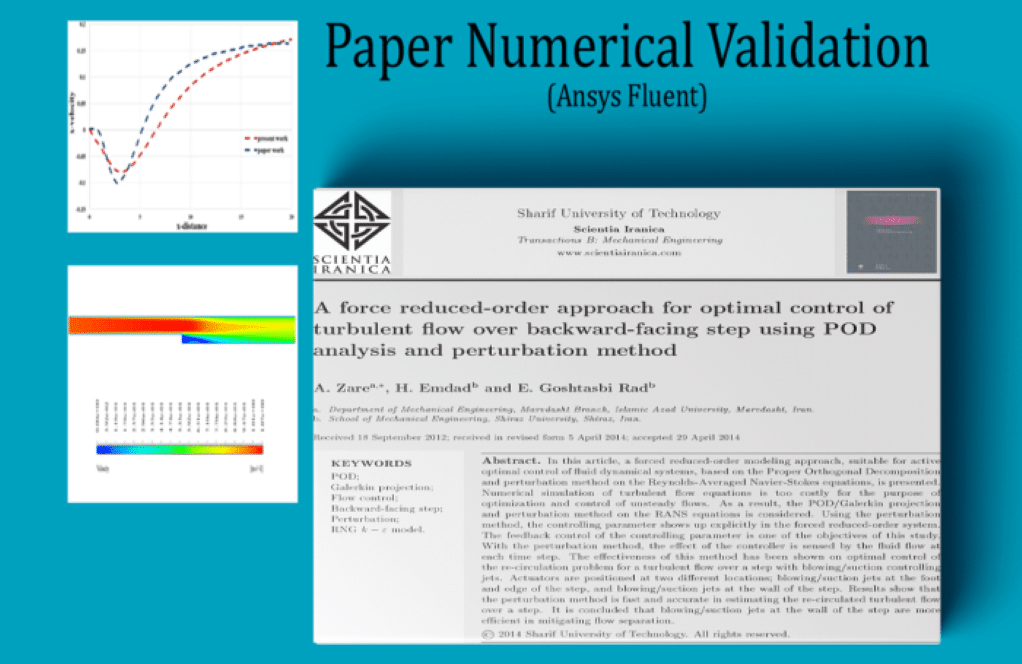
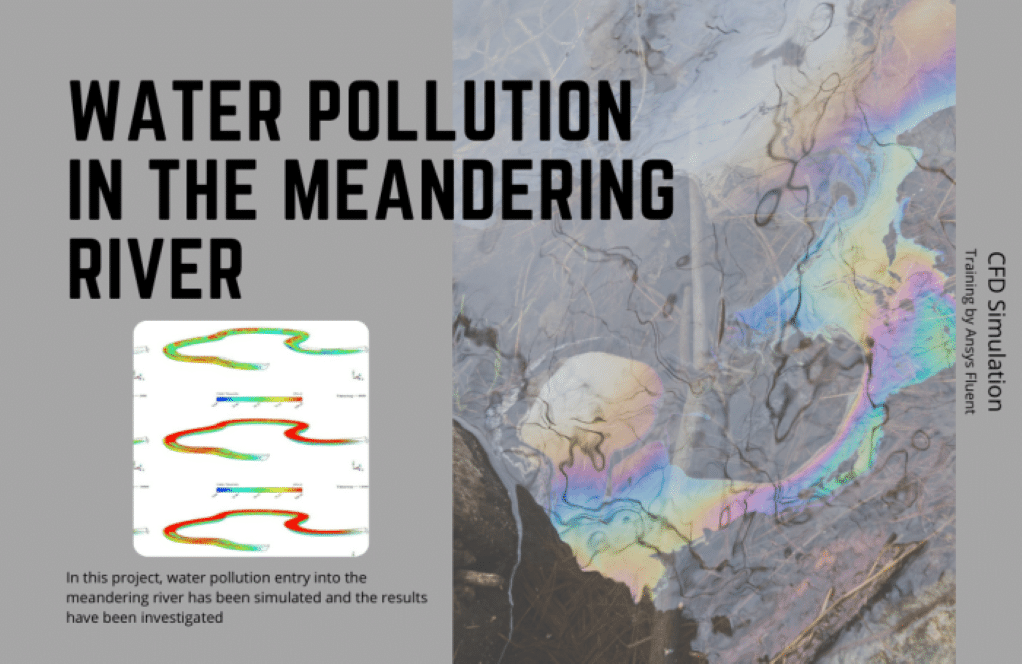
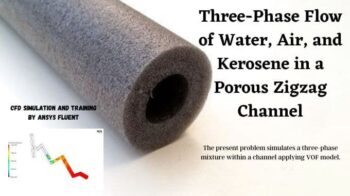
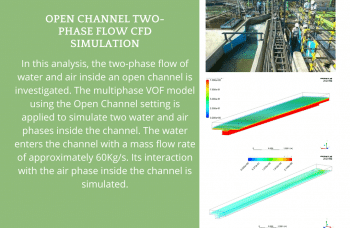
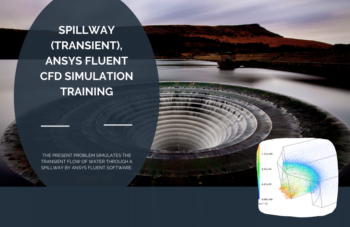
Cielo Ebert –
I was thrilled with the Hydraulic Structure & Civil Training Package. The exercises felt quite intense, and after completing them, my understanding of real-world hydraulic simulations has drastically improved. The step-by-step approach in the videos provided a smooth learning curve that allowed me to grasp the complexities at my own pace. Truly valuable for anyone serious about mastering CFD in Civil Engineering. Also, it was fascinating to see the practical implementation of MESH MOTION.
MR CFD Support –
Thank you for your wonderful feedback! We’re elated to know that you found our Advanced Hydraulic and Civil Engineering Training Package insightful and effective. It’s fantastic to hear the practical exercises enhanced your understanding and the instructional videos facilitated a user-friendly experience. Your satisfaction is our top priority, and we look forward to offering you more enriching learning materials. Keep soaring high in your CFD proficiency!
Watson Schinner DDS –
The Hydraulic Structure & Civil Training Package sounds like a comprehensive resource. The variety of simulations that cover different aspects of hydraulic and civil engineering, including turbines, open channel flow, sedimentation, and water pollution, are impressive. What an insightful way to gain advanced proficiency in ANSYS Fluent!
MR CFD Support –
Thank you for your positive feedback! It’s great to hear that you find the training package comprehensive and valuable for advanced ANSYS Fluent users. We are glad that the diversity of simulations meets your expectations and educational needs in hydraulic and civil engineering. If you need further assistance or have any questions in the future, please feel free to reach out.
Dora Haag –
I’m absolutely thrilled with the Hydraulic Structure & Civil Training Package for ADVANCED users! It’s packed with practical exercises that deepen understanding and enhance skills in ANSYS Fluent. The variety of simulations, from water turbines to pollution modeling, provides a comprehensive and challenging learning experience. The inclusion of a detailed training movie is a fantastic resource, making the process clearer and more engaging. Excellent for anyone serious about mastering CFD in hydraulic and civil applications!
MR CFD Support –
We’re delighted to hear that you’ve had such a positive experience with our Hydraulic Structure & Civil Training Package for ADVANCED users! It’s wonderful to know that you found the practical exercises, variety of simulations, and the training movie helpful and engaging. Your feedback is greatly appreciated, and it motivates us to continue providing high-quality learning resources. Thank you for your kind words, and if you have any questions or further needs, please don’t hesitate to reach out!
Dr. Keyon Grady II –
I’m intrigued by the variety of advanced exercises included in the Hydraulic Structure & Civil ANSYS Fluent Training Package. Can this also be used as a course for teaching fluid dynamics at the university level or is it strictly for individual learning?
MR CFD Support –
The Hydraulic Structure & Civil ANSYS Fluent Training Package is excellently suited for both individual advanced users and as educational material for university courses. Its comprehensive practical exercises and detailed simulations offer an in-depth understanding of fluid dynamics in civil engineering contexts. University educators can integrate these practical case studies into their curriculum to provide students with hands-on CFD experience using ANSYS Fluent.
Mrs. Ashtyn Bechtelar –
I am incredibly impressed with the Hydraulic Structure & Civil Training Package; particularly the numerical simulations created with ANSYS Fluent. Having 10 diverse, practical exercises specifically for ADVANCED users offers a substantial depth of learning opportunities. Each project seems well-structured to teach various aspects of hydraulic and civil engineering, reflecting real-world complexities in water turbines, spillways, sedimentation, and pollution dispersal. The package seems like an invaluable educational toolkit for improving CFD analysis skills.
MR CFD Support –
Thank you so much for your positive feedback on our Hydraulic Structure & Civil Training Package. We’re delighted to hear that it meets your expectations and that you find the diversity and depth of the exercises valuable for advanced learning in CFD. Your appreciation motivates us to continue providing high-quality educational content. If you have any more insights or require assistance as you work through the exercises, please feel free to reach out.
Prof. Emmanuel Monahan Sr. –
Fantastic knowledge base collected in one place! The Hydraulic Structure & Civil Training Package has really enhanced my understanding of complex simulations in the field of hydraulic and civil engineering. The water turbine simulations were especially enlightening, showing the beautiful interplay between fluid dynamics and structural mechanics.
MR CFD Support –
We’re thrilled to hear that you found the Hydraulic Structure & Civil Training Package informative and beneficial to your understanding of hydraulic and civil simulations! Thank you for your positive feedback – commitment to excellence in education is at the core of everything we do at MR CFD Company.
Gudrun Emard MD –
This package seems quite comprehensive. Are the exercises suitable for someone who plans to use ANSYS Fluent exclusively for water-related energy projects like water turbines, and not so much for pollution or sedimentation studies?
MR CFD Support –
Absolutely, the Hydraulic Structure & Civil Training Package is designed to cater to a diverse range of applications in the field of hydraulics and civil engineering, including water turbines. Advanced users like yourself will find the exercises on water turbines particularly valuable for gaining deeper insights and practical experience. Although the package includes studies on pollution and sedimentation, the skills and techniques learned can be applied broadly and are a great asset for any project using ANSYS Fluent, including those focused on water-related energy projects.
Janis Gusikowski –
I’ve gone through the Hydraulic Structure & Civil Training Package and must say, each module is well-structured and informative. The progression from basic to advanced concepts helped me grasp CFD simulations more effectively. Moreover, the integration between theory and applied exercises on topics like sedimentation and spillway flow was exceptional. Above all, the inclusion of realistic projects like pollution diffusion in a stagnant river gave me a deep dive into environmental CFD applications. The step-by-step instructional video was the cherry on top, making the learning experience enjoyable and seamless.
MR CFD Support –
Thank you for your positive feedback on our Advanced Users’ Hydraulic Structure & Civil Training Package! We’re thrilled to hear that you found the structure and content of the exercises beneficial and that they enhanced your grasp of CFD applications in hydraulic and civil engineering. It’s also great to know that the practical projects and the instructional video added significant value to your learning journey. We appreciate you choosing MR CFD Company’s learning products and hope to continue aiding in your professional development. Keep an eye out for future training offerings!
Prof. Victoria Padberg –
What a comprehensive hydraulic structures and civil ANSYS Fluent training package! The range of exercises provided, from turbines to pollution simulations, is truly impressive. The inclusion of real-world applications such as sedimentation and spillway flow ensure that advanced users can gain practical experience. The addition of the training movie is also a valuable resource for visual learners.
MR CFD Support –
Thank you for your positive feedback! We’re delighted to hear that you found our Advanced Users training package comprehensive and applicable to real-world scenarios. It’s fantastic that you appreciate the variety of exercises and the inclusion of a training movie. We always strive to deliver resources that enhance practical understanding and mastery of complex simulations. Thank you for choosing MR CFD and we look forward to supporting your continuous learning!
Roosevelt O’Hara I –
I’ve been interested in learning more about the simulation of complex hydraulic structures and your advanced package seems comprehensive. Can the skills gained from this package be applied to industry-level projects, such as the development of sustainable hydroelectric power solutions or the engineering of flood protection systems?
MR CFD Support –
Absolutely, the Advanced Users package offers practical exercises that simulate real-world hydraulic and civil engineering scenarios using ANSYS Fluent. The skills and analytical techniques learned through these exercises are definitely applicable to industry-level projects. The training encompasses a variety of problems, from the dynamics of water turbines and spillways to sedimentation and water pollution scenarios. This experience could help you develop a deeper understanding of the simulations used in sustainable hydroelectric power projects and the steps needed to design effective flood protection systems.
Mrs. Justine Mohr III –
Just finished the Hydraulic Structure & Civil Training Package for ADVANCED Users. It was a comprehensive resource that greatly expanded my understanding of different computational scenarios in hydraulic engineering. The practical exercises were particularly challenging yet rewarding, and they offered an in-depth view of ANSY Fluent’s capabilities for solving complex hydraulic problems. A great learning experience that has enhanced my CFD skills substantially!
MR CFD Support –
Thank you so much for your positive review! We’re thrilled to hear that our Hydraulic Structure & Civil Training Package met your advanced learning needs and that you found the exercises both challenging and rewarding. Your success with the package is a great testament to your dedication to enhancing your CFD expertise. If there’s anything more we can help you with in the future, please don’t hesitate to reach out. Happy simulating!
Prof. Jarod West PhD –
I’ve completed several exercises from the Hydraulic Structure & Civil Training Package and found the case studies very illustrative and practical. However, I’m inquisitive about how effectively the package might address real-life challenges faced by hydraulic engineers, especially related to sediment accumulation and its impact on hydraulic structures. Is the training content reflective of real-world problem complexities and does it provide strategies for mitigating such issues?
MR CFD Support –
Thank you for your positive feedback! We’re glad to hear you’ve found the case studies in the Hydraulic Structure & Civil Training Package useful. As for your question, our training exercises are designed to mirror real-life complexities and challenges faced by hydraulic engineers, including sediment accumulation in hydraulic structures. Through our simulations, including those focused on sedimentation like in Problem 6, we aim to provide a realistic understanding of these phenomena. The package includes strategies such as simulating sediment transport and deposition, which can help engineers evaluate and mitigate the impact of sediment on structures. Rest assured, the practical exercises are devised to equip you with relevant skills for addressing similar issues in the field.
Arielle Hayes –
I thoroughly enjoyed the Hydraulic Structure & Civil Training Package. As an advanced user, I found the cases to be richly detailed and representative of real-world engineering challenges. The variety of simulations, from the dynamics of water turbines to pollution dispersion in rivers, added a lot of depth to my learning experience. The step-by-step video tutorials were particularly helpful for me to follow along and understand the complex setups and analyses. A great collection of exercises that surpassed my expectations!
MR CFD Support –
We’re absolutely delighted to hear that you had a positive experience with the Hydraulic Structure & Civil Training Package! It’s particularly gratifying for us to know that the range of exercises was both challenging and informative for you as an advanced user. Your appreciation for the detailed video tutorials confirms that we are on the right path. Thank you for choosing our product, and we hope it will continue to contribute significantly to your knowledge in the field of Fluid Dynamics and CFD. If you ever need further assistance or have any other learning needs, please don’t hesitate to reach out to us.
Miss Rebecca Trantow –
I really enjoyed the Hydraulic Structure & Civil Training Package! Each exercise was detailed and very informative for advanced ANSYS Fluent users. The inclusion of various hydraulic structures like water turbines, open channels, and spillways provided a good range of topics to understand fluid dynamics in civil engineering contexts. The movie tutorials were a great addition, making the complex simulations easier to comprehend.
MR CFD Support –
Thank you for your kind words! We’re thrilled to hear that our Hydraulic Structure & Civil Training Package has been beneficial to you. Our goal is to provide comprehensive training materials for advanced users like you, and we’re glad you found the diversity of projects and tutorial movies helpful. If you have any more feedback or need further assistance, please don’t hesitate to reach out to us.
Miss Rachael Fahey –
The ADVANCED Users Hydraulic Structure & Civil ANSYS Fluent Training Package has been a game-changer in my understanding of fluid dynamics within engineering structures. Each simulation provided a great mix of complexity and relevance to real-world applications, demonstrating the power of ANSYS Fluent in practical scenarios.
MR CFD Support –
Thank you for sharing your experience with us! We are thrilled to hear that our training package significantly enhanced your understanding of hydraulic structures and civil engineering simulations. Your feedback motivates us to continue delivering high-quality educational materials to our users.
Ottis Ferry –
The level of detail in the Hydrolic Structure & Civil Training Package for ADVANCED Users is impressive! Really appreciate all the practical exercises and the thorough explanations of the fluid dynamics principles at play. Great material for brushing up on advanced ANSYS Fluent applications in civil engineering.
MR CFD Support –
Thank you so much for your kind words! We take pride in providing high-quality educational materials for advanced users, so it’s wonderful to hear that you found the practical exercises and explanations helpful. If you have any further questions as you delve deeper into the simulations or any other topics you’d like to see covered in the future, please let us know!